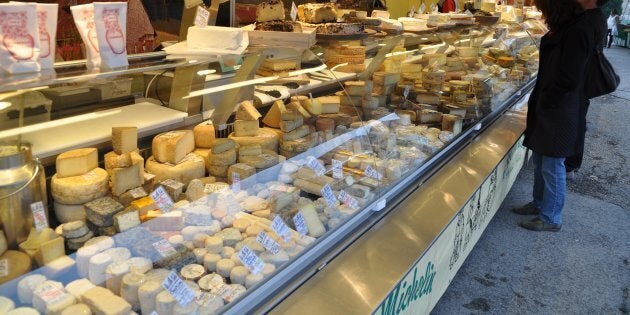
For many Canadians, nothing beats a nice slice of cheese. It's the perfect addition to many meals and depending on the type, offers a tangy and sometimes challenging taste. Not to mention, as it is a fermented dairy product, it can be considered part of a balanced diet.
But in the microbiological environment, cheese is far more than a food product. It is a perfect example of a microbial ecosystem. Several different bacterial and fungal species can be found in these products and their interactions can be monitored. Granted, this opportunity may sound rather uninteresting unless the researcher is attempting to make a new style of cheese. However, this environment can be quite useful in public health.
One of the most serious health concerns worldwide is antibiotic resistance. We now know a crisis is no longer looming, it is here. All one has to do is look up news articles to realize people are becoming infected with bacteria capable of resisting many or even all antibiotics. As these stories report, most of these situations do not have a positive outcome.
Over the last few decades, one particular microbial phenomenon has been blamed for the increase in antibiotic resistance. It's called biofilm formation. As the name implies, bacteria clump together in layers developing a strong, resistant colony. As this microscopic infrastructure develops, a number of protective molecules are released, keeping the inhabitants safe from environmental threats such as antibiotics.
As bad as this sounds, in 2002, the problems worsened. Researchers discovered another microbial maneuver occurring within the biofilm was contributing to resistance. It's called horizontal gene transfer, or HGT. The name says it all. Bacteria share genes – including those making bacteria resistant to antibiotics – with one another. The entire colony becomes more able to deal with antibiotics and microbes wishing to spread can take that trait with them.
Over the coming years, researchers realized HGT was not limited to a single bacterial species. Resistance genes could be transferred among the different types living in the biofilm. This easily could explain the spread of resistance both in the environment and also in the human body.
For researchers to have a better idea of the impact of biofilms and HGT on resistance spread, they need a pretty complicated model. First, ample quantities are needed to ensure statistical accuracy. Second, the bacterial biofilm community must be constant. Finally, the environment needs to be resistant to disturbances, such as sample collection, which could interfere with the monitoring.
Though complex laboratory models could be made to fit these requirements, for a group of American researchers, there was a perfect one already available. Back in 2014, they decided not to call their local lab supplier. Instead, all they had to do was pick up some cheese, 137 different types from all over the world to be exact.
In this study, the team found several different bacterial communities living in the rind. This was the perfect model to observe biofilms and HGT including antibiotic resistance genes. The team went ahead with their analyses and last week, the results of their work were made public.
One might not think of cheese as a hostile environment for bacteria. Yet the presence of antibiotic-producing fungi suggested the threat was present.
As needed for these types of experiments, the biofilms were consistent in species diversity with on average six species per cheese. As for the genes capable of being transferred, four out of every five species had at least one gene capable of being sent to another bacterium. Most genes were shared between the same species however several were capable of crossing over to other bacteria.
Since the environment being studied was a dairy product, many of the genes being shared were responsible for fermentation. These included enzymes to break down lactose and milk proteins as well as transporters for nutrients such as zinc and iron. This act of sharing allowed the various species to maintain their ability to thrive within the biofilm.
The surprise came in the form of antibiotic resistance sharing. One might not think of cheese as a hostile environment for bacteria. Yet the presence of antibiotic-producing fungi suggested the threat was present. Genes to protect against these fungal attacks were seen in only a fraction of the species yet the potential for transfer was there.
The results of the study demonstrate the usefulness of cheese as a model for biofilm formation and HGT. However, the findings only scratch the surface of the implications in public health. The presence and potential transfer of antibiotic resistant genes in this relatively safe environment reveal how easily these defensive elements may be shared.
In light of the harsh environment of the human body during an antibiotic prescription, this ability to share genes offers the pathogens an distinct advantage. No matter how good the antibiotic treatment, bacteria will work together to fight off the danger. Should a biofilm exist, they will have the advantage and may even win the battle.
This inconvenient reality suggests public health officials have even more hurdles in their path. They need to be on the lookout for biofilms and take these communities into consideration before attempting to use antibiotics. Thankfully, with models such as cheese at hand, the recommendations moving forward will lead to better treatment and care for those infected.
Follow HuffPost Canada Blogs on Facebook
Also on HuffPost: